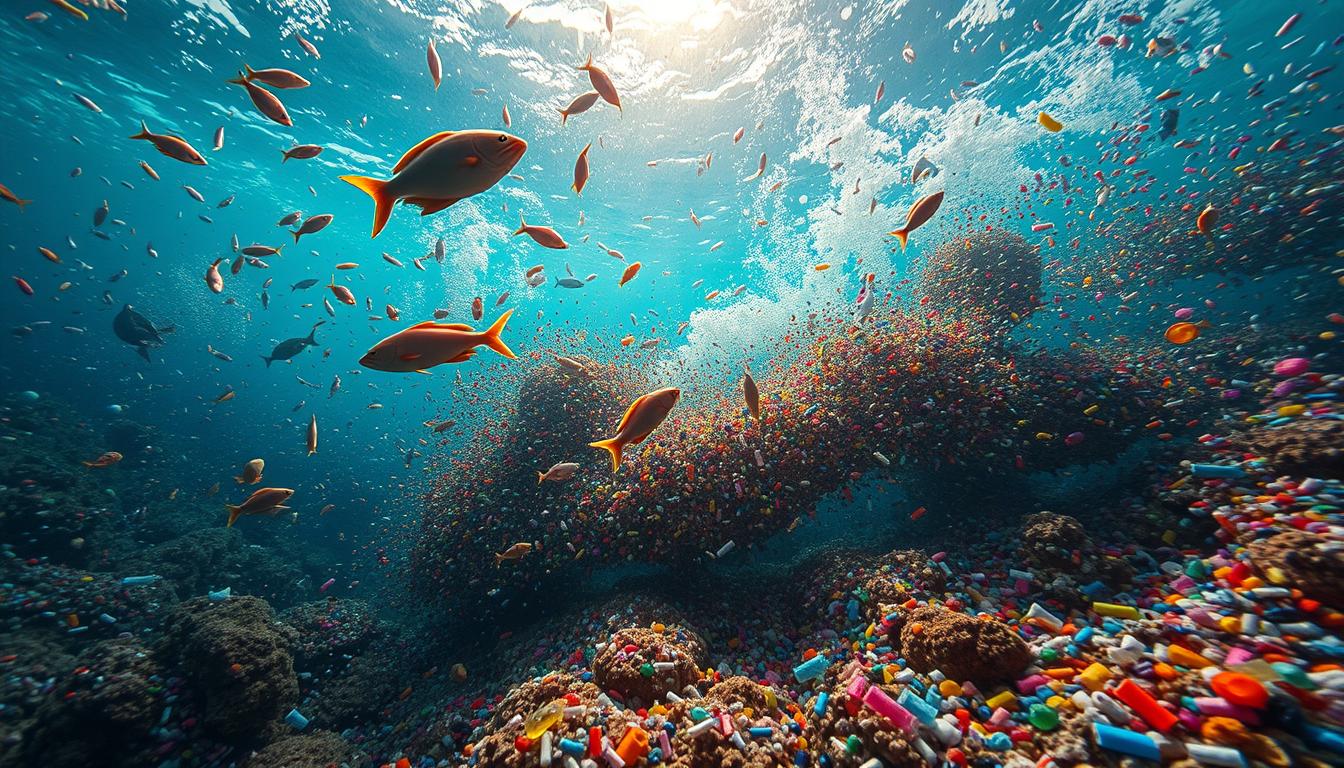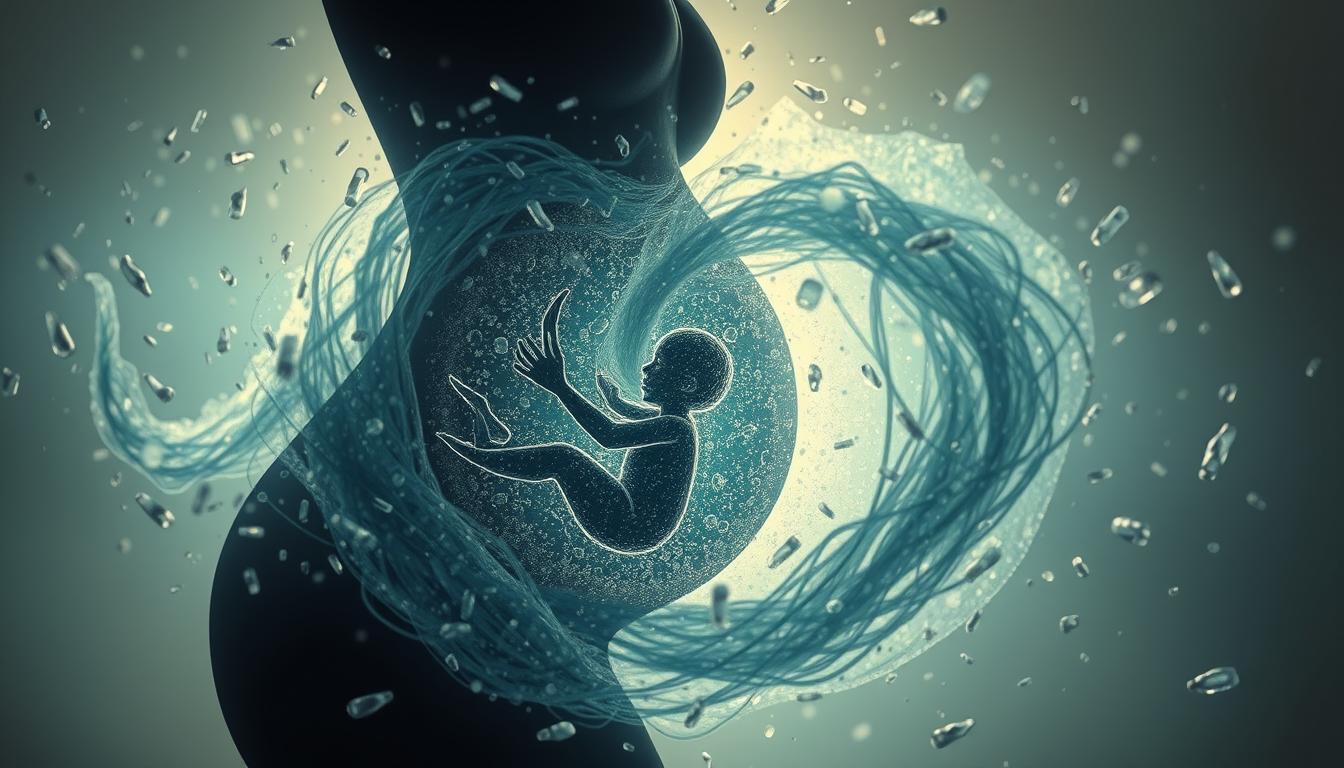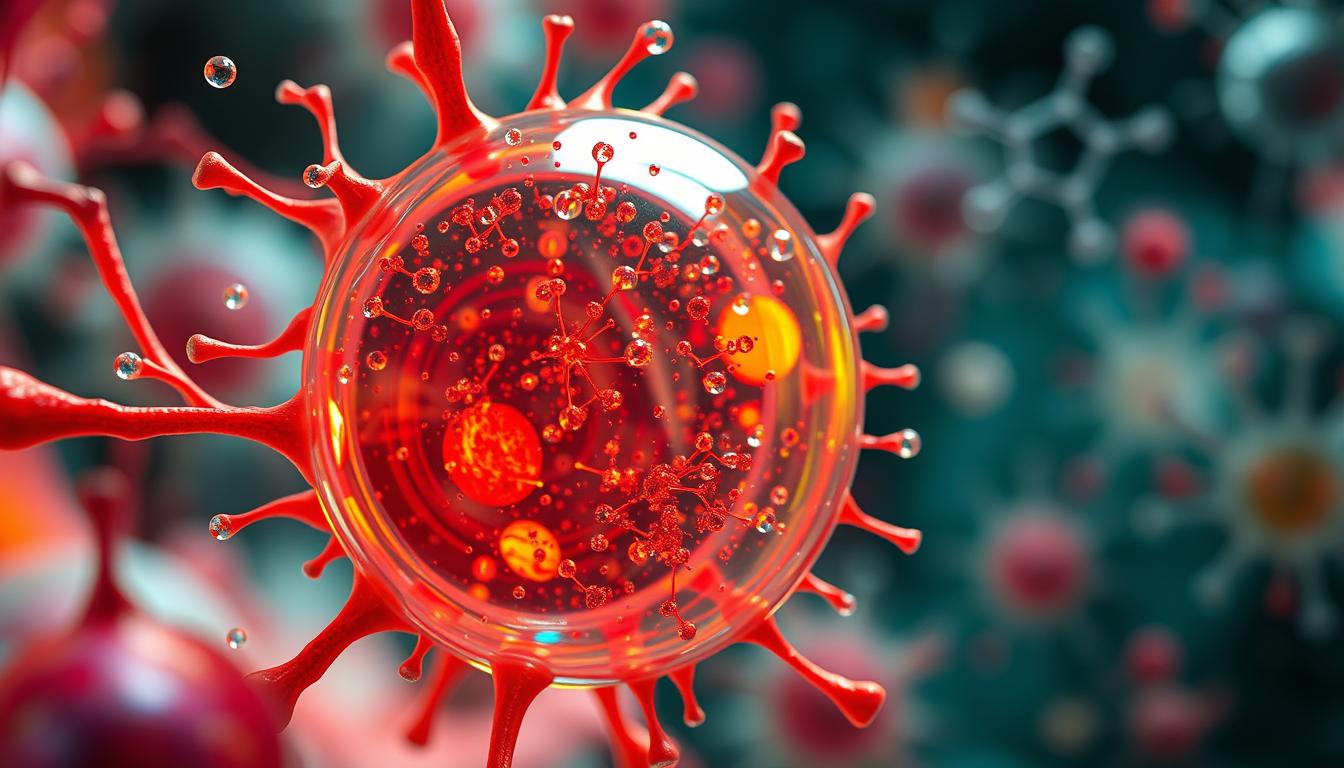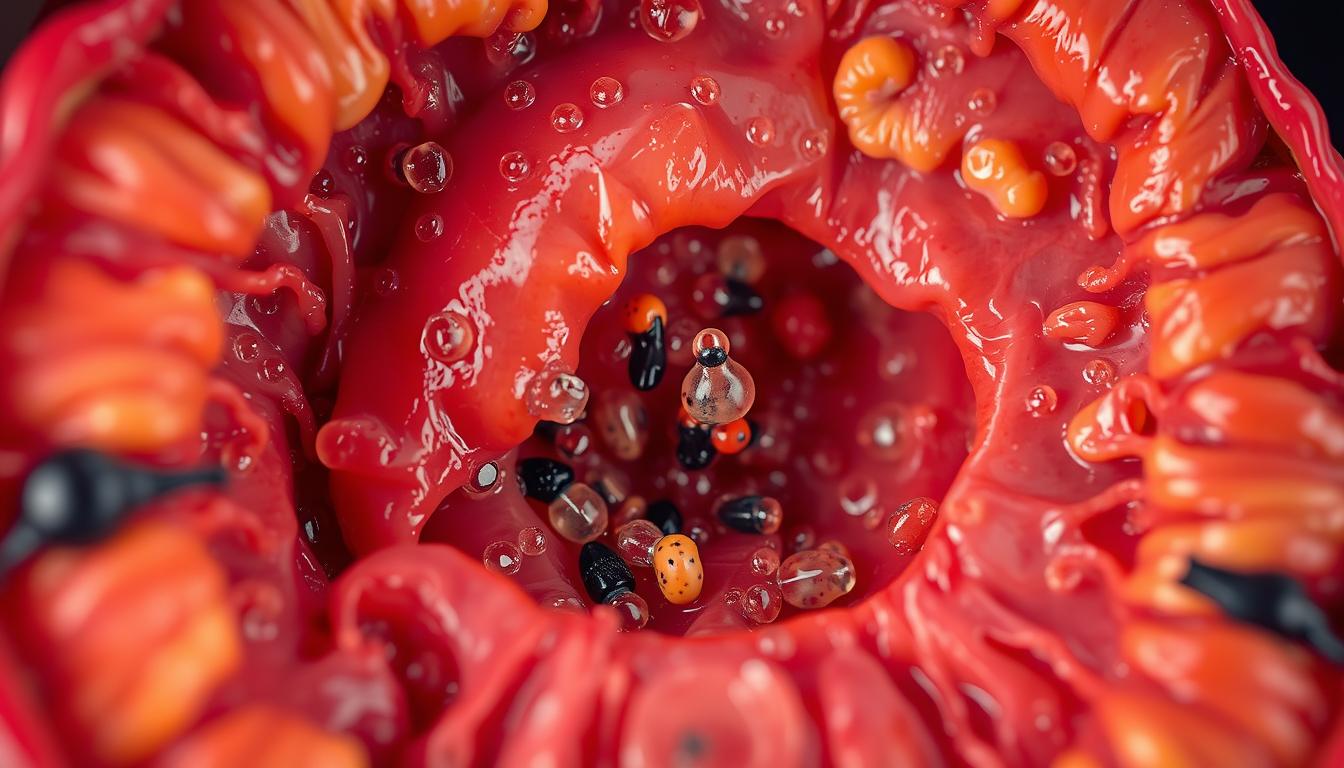Microplastics are a big worry now, affecting our environment and health. They can mess with our hormones, which is bad news due to pollution1. Over 16,000 chemicals are used in making plastics, and more than 1,000 are thought to disrupt hormones1. This makes it hard to avoid microplastics in our daily lives, which can harm our health.
The Bye Microplastics AI app helps fight microplastic exposure. It’s available on the App Store and Google Play2. Knowing about microplastic risks helps us stay healthy and avoid these harmful substances. This is key for a healthy endocrine system3.
Over 9 billion metric tons of plastic have been made in 60 years3. Most of it breaks down into microplastics, causing health problems3. Plastic production is set to grow by 30-36% in the next six years2. This means more exposure to harmful chemicals and more health issues worldwide. We must tackle the problem of microplastics and hormonal imbalance.
The Growing Threat of Microplastics and Hormonal Imbalance in Your Body
Every day, tiny particles called microplastics can sneak into your body. They can mess with your hormone levels. This can cause health issues like hormonal imbalances and reproductive problems.
Microplastics are tiny pieces of plastic, from 1 μm to 5 mm4. They can get into your body through eating, breathing, or touching them. This can lead to health problems.
The science behind how microplastics affect hormones is complex. But it’s known they can mess with natural hormones. This can change how hormones are made and controlled5.
Some microplastics have additives that can be harmful. These additives can make up to 35% of some plastics. This is bad for the environment and our health4. Also, microplastics can contain chemicals like BPA and phthalates. These chemicals can harm our nervous and reproductive systems6.
Studies show microplastics are everywhere, in food, water, and air5. In 2019, over 368 million metric tons of single-use plastic were made. By 2050, about 12,000 metric tons of plastic waste will pollute nature if we keep going like this5.
How Microplastics Enter Your System
- Ingestion: Microplastics can enter your body through the food you eat and the water you drink.
- Inhalation: Microplastics can also enter your body through the air you breathe.
- Skin contact: Microplastics can enter your body through skin contact with contaminated products or environments.
It’s important to know how microplastics get into your body. Understanding hormone disruption helps us protect our health.
Hidden Sources of Microplastic Exposure in Your Daily Life
As you go about your daily life, you might not know about the hidden sources of microplastic exposure. Microplastics are found in many products, like food, water, and air. They are also in clothing, cosmetics, and household items7. These plastics can harm the environment and even human health8.
Some common sources of microplastic exposure include:
- Food packaging, such as plastic bags and containers
- Personal care products, such as toothpaste and exfoliating scrubs
- Clothing, like synthetic fabrics like polyester and nylon
- Household items, such as cleaning products and furniture
Studies show that people eat about 39,000 to 52,000 microplastic particles a year from food8. This shows how important it is to know about plastic waste and how to avoid it.
By knowing where microplastics come from, you can lower your exposure and stay healthy. You can make better choices about what you use and eat. Also, support efforts to cut down plastic waste and be more sustainable7.
| Source of Microplastic Exposure | Examples |
|---|---|
| Food Packaging | Plastic bags, containers, and bottles |
| Personal Care Products | Toothpaste, exfoliating scrubs, and cosmetics |
| Clothing | Synthetic fabrics like polyester and nylon |
Understanding the Impact on Your Endocrine System
Exploring microplastics and their health effects is key. Your endocrine system, made of glands, controls hormones and body functions. Microplastics can disrupt hormones, harming your health9.
Studies show microplastics can get into your body through eating and breathing. This can cause hormonal imbalances, reproductive issues, and developmental problems10. Symptoms include weight gain, mood swings, and reproductive issues.
Common Symptoms of Hormone Disruption
- Weight gain
- Mood changes
- Reproductive issues
Long-term effects can raise the risk of diseases like cancer and diabetes. Children and pregnant women are more vulnerable9. Knowing how microplastics affect your endocrine system helps you protect your health.

Long-term Health Implications
It’s important to understand the long-term risks of microplastic exposure. Studies show even small amounts of endocrine-disrupting chemicals can be risky10. Reducing your exposure to microplastics can help prevent hormone disruption and protect your health.
| Health Problem | Increased Risk |
|---|---|
| Cancer | High |
| Diabetes | High |
Essential Steps to Reduce Your Microplastic Exposure
To cut down on microplastics, it’s key to know where they come from and how to lessen them. Microplastics can mess with our hormones, as they contain chemicals like BPA and phthalates. These chemicals can act like human hormones, affecting our growth and reproduction11. We can reduce exposure by following simple tips, making smart shopping choices, and using digital tools.
For daily protection, try using baking soda, vinegar, and water for cleaning. They work just as well as commercial cleaners and help avoid toxic chemicals11. Also, using vacuum cleaners with HEPA filters can help keep dust and microplastics at bay11. A good water filter can also remove microplastics and other harmful stuff from your tap water12.
When shopping, pick items with less packaging and avoid plastics you use once12. Opt for clothes made from natural fibers like cotton, wool, and hemp. They release fewer microplastics than synthetic fabrics12. Tools like the Bye Microplastics AI app can give you tips on how to reduce your exposure.

Practical Tips for Daily Protection
- Use baking soda, vinegar, and water for cleaning
- Use household vacuum cleaners with HEPA filters
- Invest in a quality water filtration system
Smart Shopping Choices
- Choose products with minimal packaging
- Avoid single-use plastics
- Choose natural fiber clothing
| Microplastic Source | Reduction Strategy |
|---|---|
| Microbeads in personal care products | Avoid using products with microbeads |
| Synthetic fibers in clothing | Choose natural fiber clothing |
| Single-use plastic packaging | Avoid using single-use plastics |
Taking Control: Your Path to Hormone Health in a Plastic World
In a world filled with environmental1314 pollution, it’s key to control your hormone health. By cutting down on harmful13 microplastics, you protect your endocrine system. This helps avoid hormone disruption15.
Be careful with your daily choices – from products to food. Choose natural, unprocessed items when you can. Avoid plastics15, personal care items, and other sources of1314 endocrine disruptors. Making smart choices helps keep your hormone balance and health safe.
Your health is up to you. Stay informed and act to face this plastic world confidently. Together, we can build a healthier, stronger world, step by step.
FAQ
What are microplastics and how can they disrupt my hormones?
How do microplastics enter my body?
What are the sources of microplastic exposure in my daily life?
How can microplastic exposure impact my endocrine system?
What can I do to reduce my microplastic exposure?
How can I take control of my hormone health in a plastic world?
Source Links
- How Do Chemicals in Plastics Impact Your Endocrine System?
- Plastics pose threat to human health
- Study shows endocrine disrupting effects of micro and nanoplastic particles
- A Detailed Review Study on Potential Effects of Microplastics and Additives of Concern on Human Health
- A review of the endocrine disrupting effects of micro and nano plastic and their associated chemicals in mammals
- Microplastics Everywhere
- Microplastic sources, formation, toxicity and remediation: a review
- Microplastics: A Real Global Threat for Environment and Food Safety: A State of the Art Review
- Endocrine Disruptors
- 9 Ways to Avoid Hormone-Disrupting Chemicals
- I’m a Microplastics Researcher. Here’s How To Limit Their Dangers
- 5 Tips to Avoid Microplastics and Reduce Your Family’s Exposure
- Study: Most Plastics Leach Hormone-Like Chemicals
- Plastics and Human Health | Plastics and the Environment Series
- How Toxins Affect Your Hormones and Fertility and How to Detox to Optimize Both | Dr. BreAnna Guan






